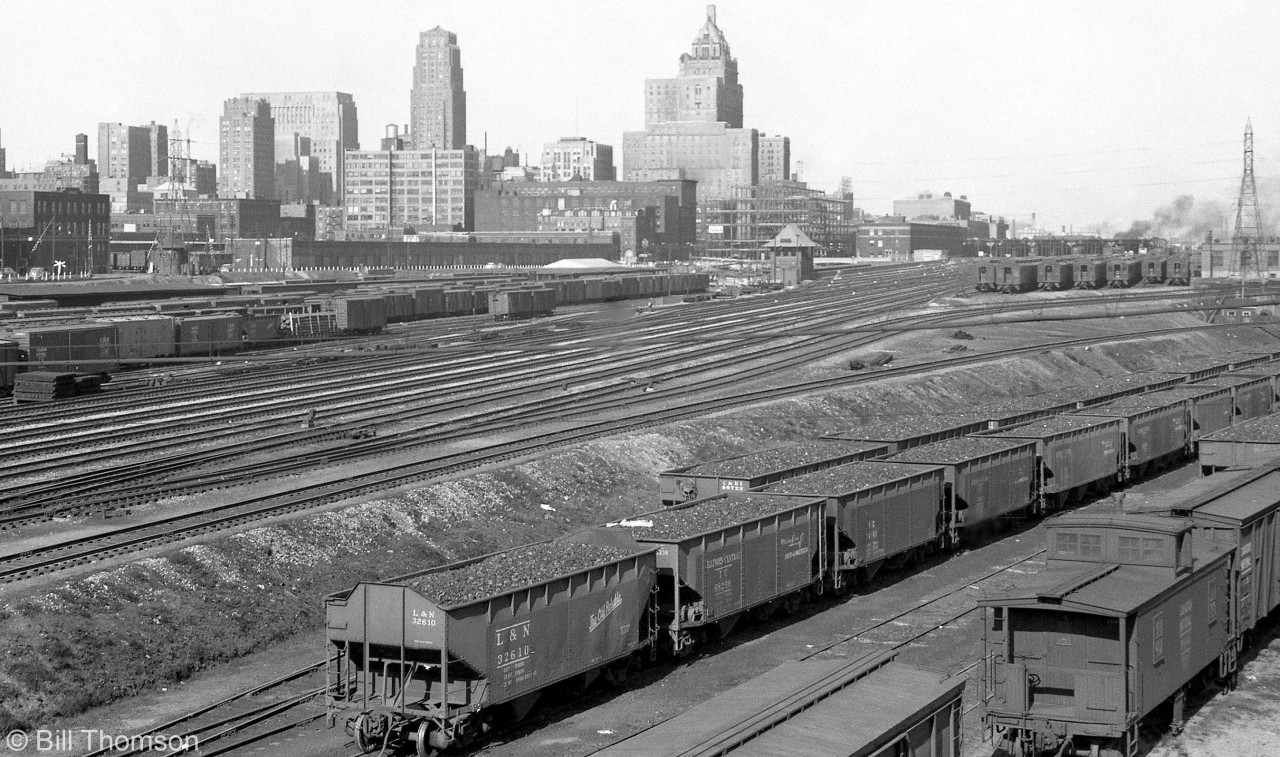|
Caption: The downtown Toronto Skyline and railway corridor is pictured looking east of the Spadina Avenue overpass in 1950.
At the bottom right, Illinois Central, Louisville and Nashville, and C&EI hoppers are spotted at CN's Spadina Roundhouse, loaded with coal for the coaling tower and steam engines that populate the ready tracks.
The passenger cars on the single-ended tracks in the upper right are in part of CPR's John St. coachyard near their roundhouse (out of view). In the distance on the upper right is Toronto Union Station and its train shed, the CN Express building, and the CN Telecommunications building under construction (later CNCP, Unitel, and presently the telecommunications hub at 151 Front St.). The main Toronto Terminals Railway tracks to/from the station pass through the middle of the image, along with the TTR's John Street interlocking tower that controlled train movements in and out of this area (one of 4 TTR interlocking towers around Union).
Toronto's 1950 skyline was devoid of office towers and condos that would spring up in the decades to follow. The CPR's Royal York Hotel and the Canadian Commerce Bank Building (the tallest building in the British Commonwealth at the time) are the two most prominent buildings. Also visible on the left are CN's old freight sheds north of Front Street near Simcoe, and CN's lower freight yards with loading platforms and team tracks full of boxcars and other equipment.
|



Thanks for this marvellous image, Bill
Our family moved from Trenton to Mount Dennis in Toronto in 1951 when my dad was posted to Downsview Air Base. A couple of years later, he introduced me to trains by taking me down to Front Street on Sunday mornings. From about where the car appears by the railway crossing sign, we would spend time on Sundays watching the steam trains come and go. It started something that has lasted 70 years. The whole area looks so different now.
Another thing to note, on the left above all the boxcars, is the grade crossing at Front Street for CN’s freight shed lead, including their own rounded crossing gatehouse tower (CP had their own further west at Front & Spadina for their lead).
That portion of the Coach Yard was known as the Bone Yard. It stored wooden and other old passenger equipment used for holiday traffic, picnic trains etc.